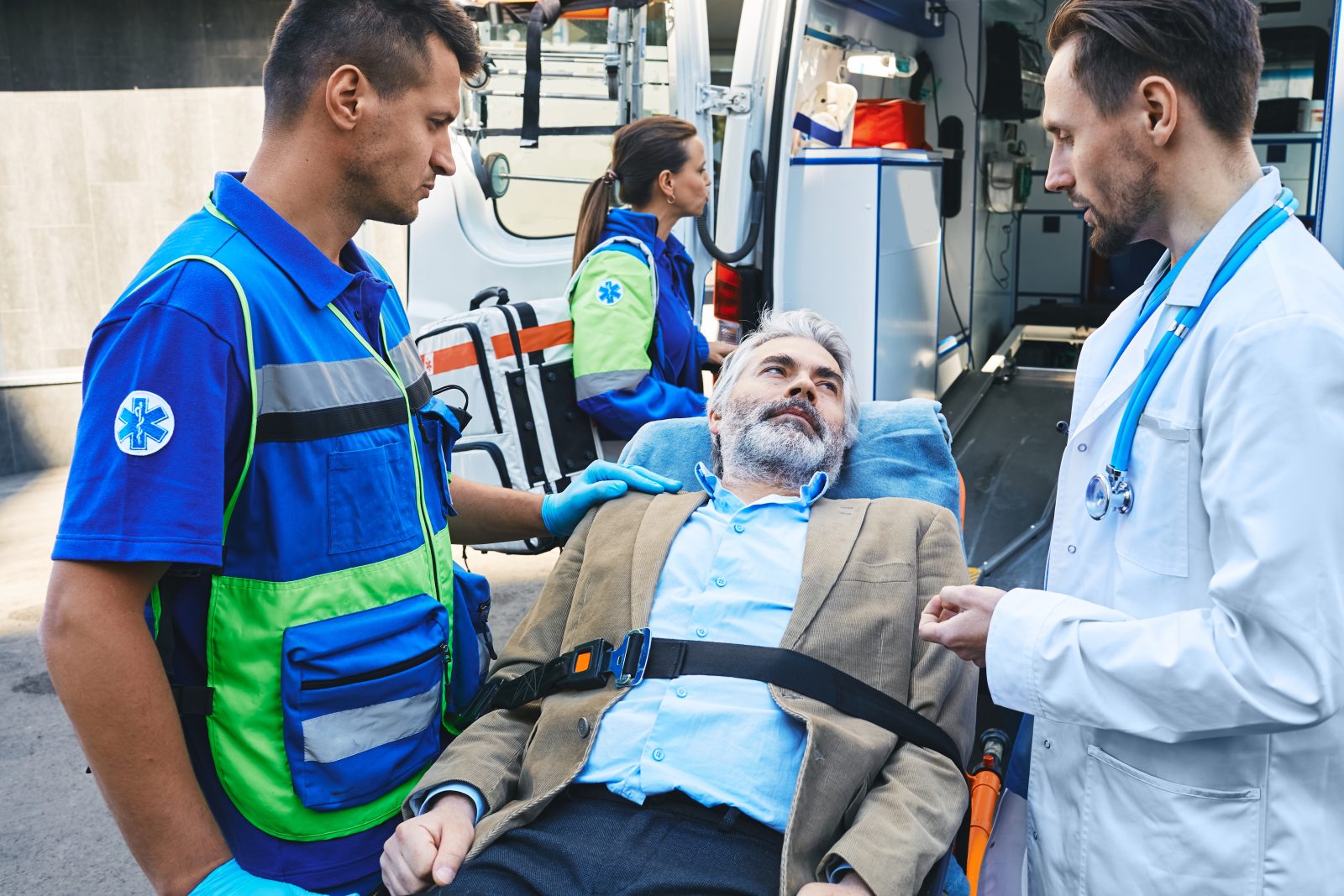OSHA Training for Emergency Medical Services (EMS) will educate emergency medical workers on how to protect themselves and others while adhering to State and Federal OSHA regulations.
Congress established the Occupational Safety and Health Administration (OSHA) with the purpose of creating safe and health-conscious work conditions by setting and enforcing standards.
There are several different elements to OSHA compliance. This course goes into detail on various OSHA standards, and provides advice for how emergency medical workers can adhere to these standards. OSHA requirements span from bloodborne pathogen exposure control to preventing injury and illness within the workplace, so it is crucial for emergency medical workers to fully understand each of these requirements.
What You’ll learn
- Overview of what OSHA is
- Definition and implementation of an exposure control plan
- Proper needle-stick procedural methods
- How to manage biomedical waste
- Information on managing chemical substances
- How to develop an emergency plan and injury and illness prevention program
Details
Course length: 45 minutes; CEU: 0.75.
Languages: American English
Key features: Audio narration, learning activity, and post-assessment
Get Certified
American Medical Compliance (AMC) is a leader in the industry for compliance, Billing, and HR solutions. To become certified, please visit us at American Medical Compliance (AMC).
Reach out for other courses by visiting the AMC Course Library.
Exposure Control Under OSHA’s Bloodborne Pathogens Standard
An Exposure Control Plan contain information specific to each emergency medical facility, receive updates yearly to reflect changes, and be readily available to all emergency medical workers. Exposure Control Plans may get updated when new technology has been introduced to reduce exposure or if new positions are created within the organization. This training gives an in-depth description of all of the requirements for the Exposure Control Plan.
Employers must determine exposure levels among employees. There should also be various methods implemented to control employee exposure. These could include universal precautions and personal protective equipment, among other measures.
OSHA-Recommended Needle-Stick Procedure
There have been estimates that nearly 6 million workers in the healthcare industry and related fields are at risk of exposure to bloodborne pathogens. Bloodborne pathogens are pathogenic microorganisms that are present in the human bloodstream. These pathogens have the ability to cause diseases in humans. Therefore, there are certain requirements from OSHA for recording work-related needle-stick injuries and cuts and handling infectious material such as blood. Our course describes all of the criteria that OSHA requires from each needle-stick injury. There are also regulations regarding cuts or lacerations that did not involve infectious material such as blood, which this training also outlines. It is crucial to follow proper needle-stick procedures and protocol to keep bloodborne pathogen infection rates down. There are certain steps one must follow immediately after a needle-stick to limit possible infection. Proper wound care is crucial for stopping the spread of infection.
Information on Blood-work
It is important to report these incidents immediately because they can lead to infection with Hepatitis B, Hepatitis, C, HIV, and other bloodborne pathogens. Here are some steps to follow after a needle-stick incident has occurred:
Notify your supervisor. Then, arrange for an immediate medical evaluation of the worker involved in the incident. You also must determine who the source individual is. If the status of such an individual is not already known, employers must test the source’s blood as soon as possible.
Conduct blood-work IMMEDIATELY once a work-related needle-stick injury or cut has occurred. This is to determine the potential levels of exposure to bloodborne pathogens.
It is important to remember that the results of employee blood-work are medical records, and are therefore confidential. Employees may go to their primary care physicians or an Urgent Care or Hospital for consultation. This course provides several recommendations on employee consultations to ensure proper treatment. This training also gives tips on how needle-stick incidents can be prevents. An example of this is avoiding recapping needles.
Determining Exposure Through Universal Precautions
Universal Precautions are an approach to infection control where you treat all human blood and bodily fluids as if they are infectious. OSHA’s Bloodborne Pathogen Standard has several requirements relating to Universal Precautions.
Specifically, emergency medical workers must observe Universal Precautions to limit their contact with blood and other bodily fluids containing bloodborne pathogens. This is because it is difficult to explicitly differentiate between body fluids that are infectious and those that are noninfectious. Therefore, emergency medical workers must take appropriate precautions when dealing with all blood or bodily fluids.
OSHA Exposure Control Requirements
Organizations such as OSHA and the CDC require that facilities revisit and updat exposure controls annually. A hierarchy of controls typically acts as an aid in controlling workplace hazards associated with infectious materials and determining how to most appropriately implement effective controls. Elements of the hierarchy of controls include elimination, substitution, engineering controls, administrative controls, and PPE. Elimination refers to physically removing the hazard, while substitution means replacing the hazard. Engineering controls isolate people from the hazard, administrative controls helps to improve the ways in which people work, and PPE helps to protect healthcare professionals through the use of personal protective equipment. Some of these methods are less effective than others, which this training further discusses.
Personal Protective Equipment (PPE) is an example of a common workplace practice that emergency medical workers use. Basically, PPE is equipment that healthcare workers wear to minimize exposure to workplace hazards such as bloodborne pathogens. Examples of PPE include gowns, respirators, and gloves. It is crucial that all PPE is clean and properly fitted before emergency medical workers wear it in environments with high levels of exposure.
Importance of OSHA Training for Emergency Medical Services (EMS)
The online OSHA Training for Emergency Medical Services (EMS) enhances worker safety and provides tools to minimize workplace exposure. It’s for everyone’s convenience that an online training course on OSHA exposure determination methods is available. The course is highly interactive and engaging and learners can take it in their preferred setting and at their preferred pace. You may access interactive bite-sized episodes that are available using any device you prefer.
This particular course helps emergency medical workers remain properly informed before coming into contact with hazardous chemicals or infectious materials. This is specific to the setting of emergency medical services (EMS). It is crucial that by the end of the OSHA Training for Emergency Medical Services (EMS) course, the participants have an in-depth understanding of OSHA requirements and regulations to minimize exposure to workplace hazards.
Needle-Stick Safety and Prevention Act
Occupational exposure to bloodborne pathogens has continued to be a serious problem. With the purpose of revitalizing OSHA’s Bloodborne Pathogen Standard the Needlestick Safety and Prevention Act was signed into law in 200. This act created additional requirements for emergency medical workers to evaluate and implement safer medical devices.
This act created new OSHA regulations. For example, OSHA requires that employers implement new procedures when updating their exposure control plan.
Additionally, all sharp instruments must be reviewed and evaluated annually. This course elaborates on the required elements of the annual sharps review and other OSHA regulations.
Personal Protective Equipment (PPE)
An integral part of an OSHA Training for Emergency Medical Services (EMS) course is knowing how to use personal protective equipment appropriately. There is a wide range in the extent of PPE used in emergency healthcare settings. Most commonly, gloves, gowns/aprons, respirators, and goggles/face shields are used. However, PPE can be used improperly within emergency medical settings. Therefore, exposure control plans must detail proper use of PPE for emergency medical workers.
Online OSHA Training
A published study (Roberts, 2022) revealed that interactive techniques such as the use of videos, group discussions, and the use of real-world examples were more effective training strategies. They all stood out and were easily remembered by the participants. This contributes to the awareness of what training design and delivery work best for future training.



